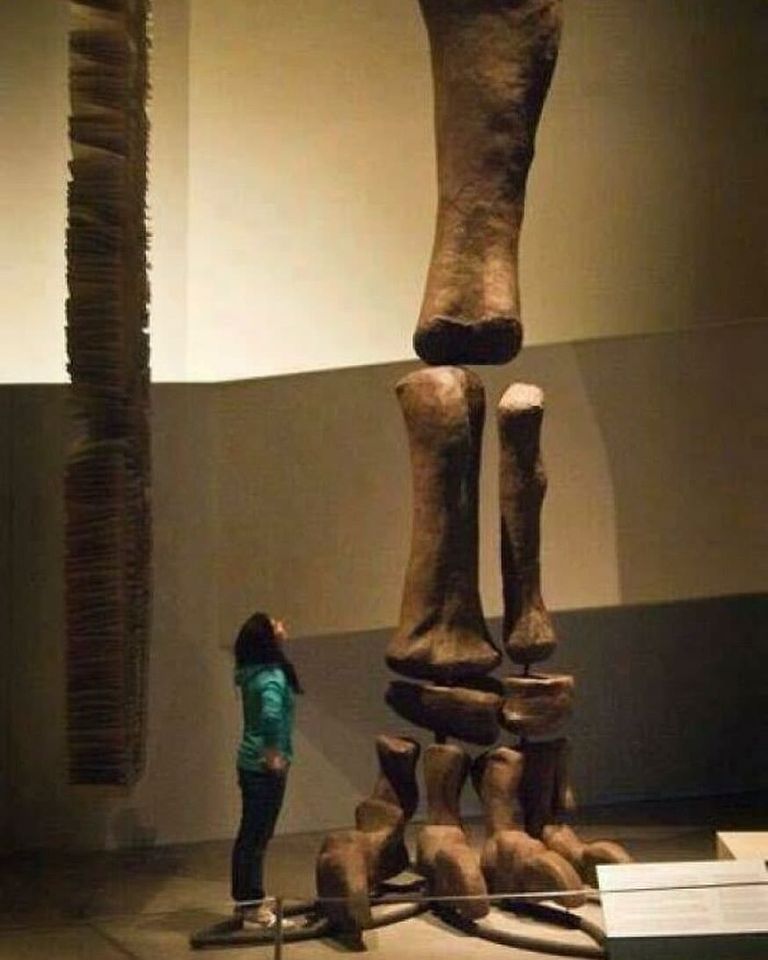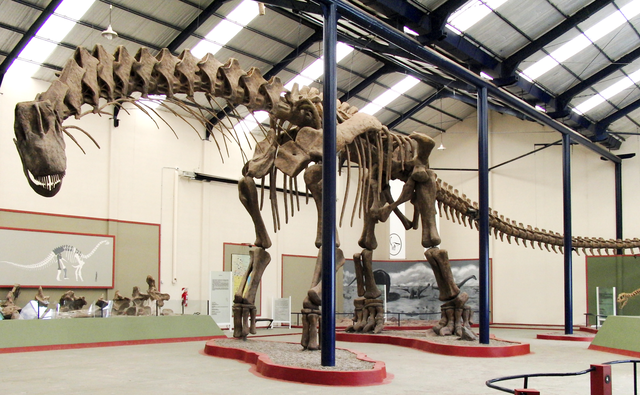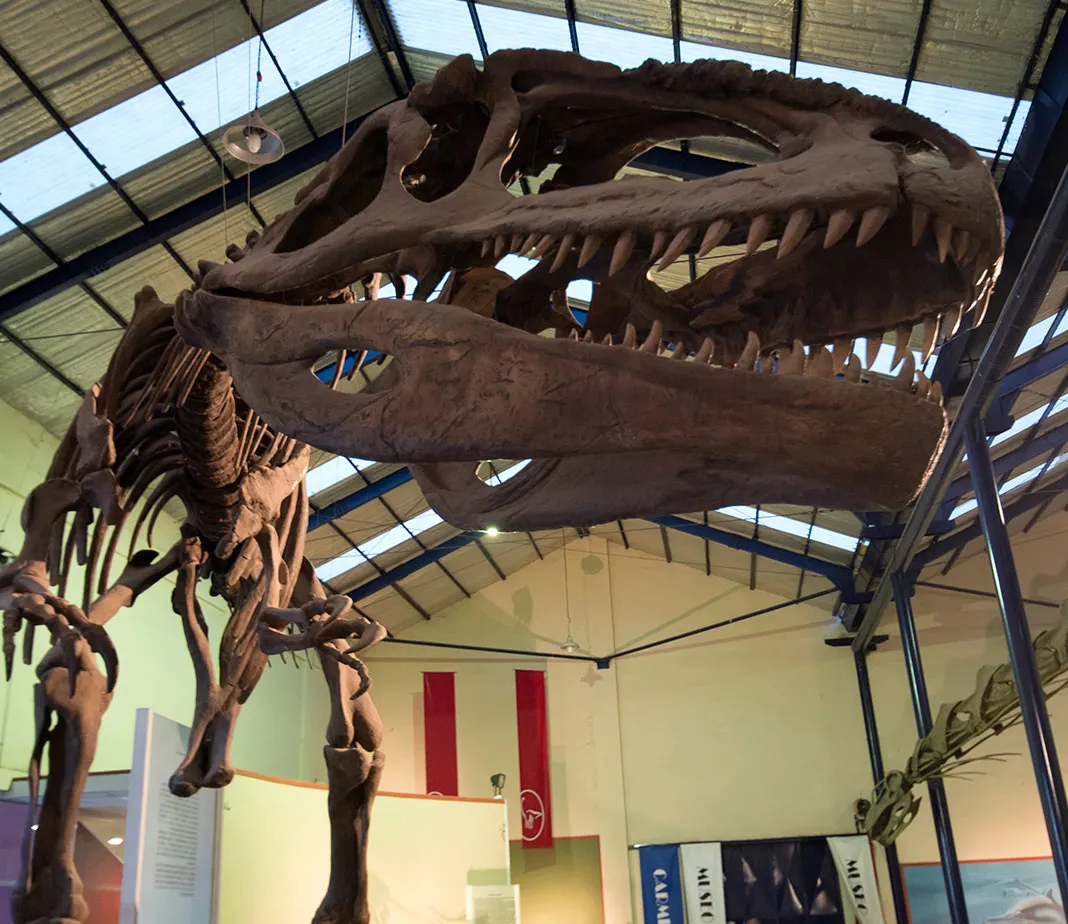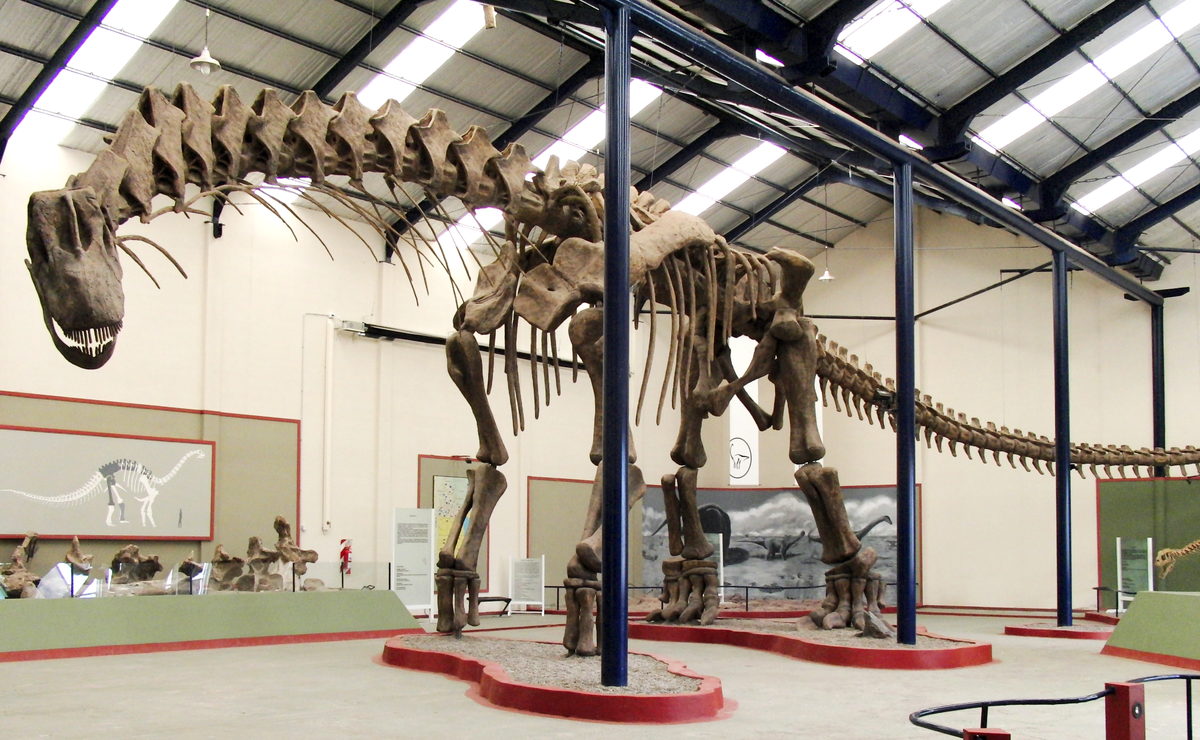Leg bone of a dinosaur called Argentinosaurus, which lived in South America 95 million years ago. It is one of the largest known dinosaurs and is estimated to have reached 35 meters in length and 100 tons in weight.
Once upon a time, during the Late Cretaceous period, a giant dinosaur named Argentinosaurus roamed the land we now call Argentina. This dinosaur, a member of the Titanosauria family, is known as one of the largest land animals to have ever existed, measuring between 30 and 35 meters long and weighing between 65 and 80 tons. Though known only from fragmentary fossils, Argentinosaurus has become a symbol of grandeur in the world of dinosaurs.

The story began in 1987, when a farmer accidentally discovered a huge bone on his farm near the city of Plaza Huincul. Little did he know that he had stumbled upon the fossil of one of the largest dinosaurs ever known. This discovery quickly garnered the attention of scientists. In 1989, a scientific excavation led by Argentine paleontologist José Bonaparte was conducted. This excavation yielded several back vertebrae and parts of the sacrum—fused vertebrae between the back and tail vertebrae. Other specimens included a complete femur and the shaft of another bone.

In 1993, José Bonaparte and paleontologist Rodolfo Coria named this dinosaur Argentinosaurus huinculensis. The genus name “Argentinosaurus” means “Argentine lizard,” while the species name “huinculensis” refers to its discovery location, Plaza Huincul.

However, due to the fragmentary nature of Argentinosaurus fossils, interpreting them is challenging. Scientists debate the position of the recovered vertebrae within the vertebral column and the presence of accessory articulations between the vertebrae, which would have strengthened the spine. A computer model of the skeleton and muscles of this dinosaur estimated that it had a maximum speed of 7 km/h (5 mph) with a pacing gait, where the fore and hind limbs on the same side of the body move simultaneously.

The fossils of Argentinosaurus were found in the Huincul Formation, which dates from the middle Cenomanian to early Turonian ages (about 96 to 92 million years ago) and contains a diverse dinosaur fauna, including the giant theropod Mapusaurus.
The discovery of Argentinosaurus is not only a journey into prehistoric times but also a testament to the wonders of nature and the human capacity for exploration. Although much remains unknown about this dinosaur, its presence in the ancient world has enriched our understanding of life on Earth millions of years ago.




